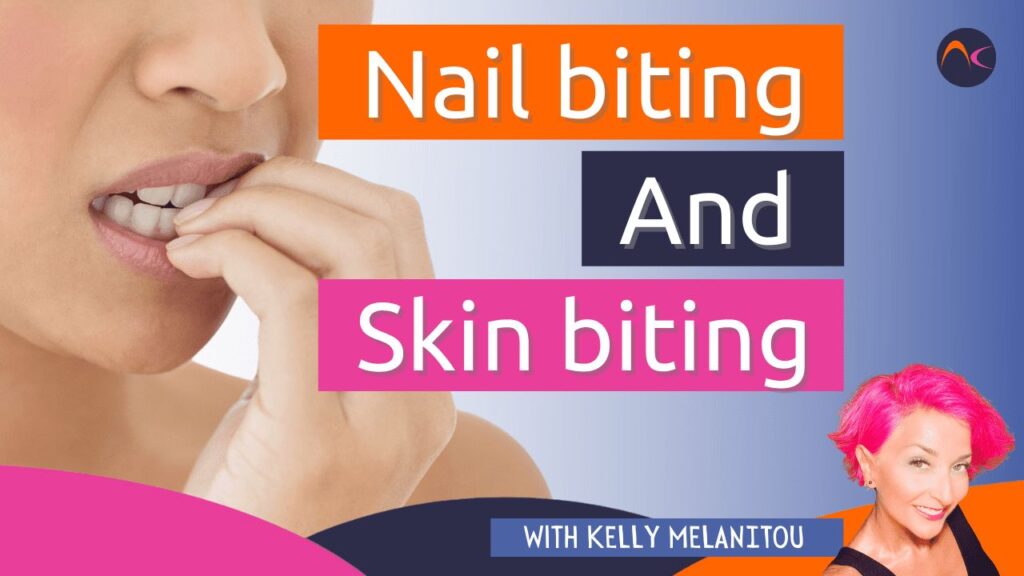As nail professionals, one of the most common types of “problem nails” we encounter is the bitten ones. Nail biting and skin biting typically begin in childhood and usually accelerate during adolescence. They then become a habit that can be difficult to manage. But why does someone develop this habit, to begin with? How harmful is it? And how can we help?
Comprender el hábito de morderse las uñas: De hábito infantil a reto para toda la vida
Aunque muchas personas superan el hábito de morderse las uñas (¡yo incluida!), para otras se convierte en una costumbre de por vida. Suele empezar como un hábito nervioso, posiblemente un esfuerzo por encontrar alivio temporal al estrés y la ansiedad. Morderse las uñas puede convertirse en un hábito habitual cuando una persona se siente nerviosa, impaciente, frustrada o aburrida. También puede ser una actividad distraída cuando se está concentrado en otra cosa, como resolver un problema. A veces, aunque no muy a menudo, morderse las uñas puede ser un síntoma de trastornos mentales como el TOC, el TDAH, el TDM, etc.
A very common progression from nail biting (also called onychophagia) is skin picking and skin biting (periononychophagia). These can severely and drastically change the look of someone’s nails and fingers, and lead to viral infections such as paroniquia since the skin is broken. In some cases, the nails and fingers can become severely deformed after years of nail and skin biting. Also, if there is a mental health condition behind this habit, it can evolve to dermatophagia, which is a compulsion disorder of gnawing or biting someone’s skin.
Efectos secundarios comunes de morderse las uñas y la piel
Los efectos secundarios habituales de morderse las uñas y la piel son:
- Dolor
- Fungal infection of the nail and surrounding skin
- Hinchazón o dolor alrededor de las uñas
- Onicólisis
- Enfermedades bucodentales
- Illnesses due to pathogens transferred from fingers to mouth (from intestinal infections to common flu)
- Daños en los dientes, como astillamiento
Sin embargo, también puede tener repercusiones sociales, ya que muchas personas que se muerden las uñas se avergüenzan del aspecto de sus dedos, lo que les lleva a guardar las manos en los bolsillos, evitar los apretones de manos y retraerse socialmente.
Hay muchas medidas que una persona que se muerde las uñas puede tomar para abandonar este hábito:
- Evitar los factores que desencadenan el hábito de morderse las uñas, como la sobreestimulación o el estrés.
- Tomar medidas para controlar el estrés y la ansiedad
- Mantén tus manos ocupadas con algo como un dispositivo fidget, una pelota antiestrés, cuentas, etc.
- Use a bitter nail polish, specifically designed for nail biters
- Terapia cognitivo-conductual o entrenamiento para la deshabituación
- Visite a menudo un salón de manicura
Thankfully, nail professionals can really help with this by transforming the look of a nail biter’s nails and fingers with manicures and enhancements.
A good manicure will remove any padrastros y la piel dura, y alisan los bordes irregulares, lo que hace menos tentador mordérselas. Además, gastarse el dinero y saber que alguien revisará pronto sus uñas puede evitar que un mordedor continúe con su hábito.
Programa de promoción de uñas sanas en el salón de belleza
Nail enhancements, besides the fact that they are not that easy to bite, can really transform the look of a nail biter’s nails and hands. They provide a hard, protective coating that makes the nails look prettier, which can make the nail biter think twice before putting them in their mouth. If nail art is added, it can be even more effective for children and young adults.
My preferred approach is to create an anti-nail-biting program at the salon. This can include manicures, spa and paraffin treatments, home care products, and eventually enhancements, to help your clients quit this unhealthy habit. I can guarantee you they will be grateful, and you will have a loyal client with frequent appointments!
Más información Morderse las uñas artículo


